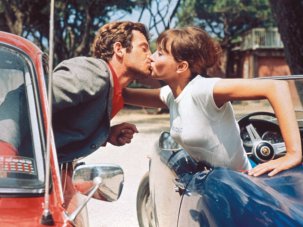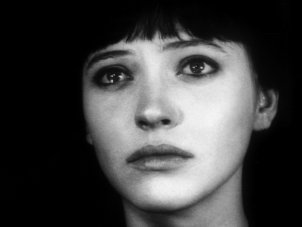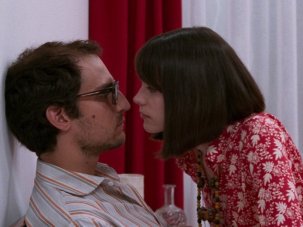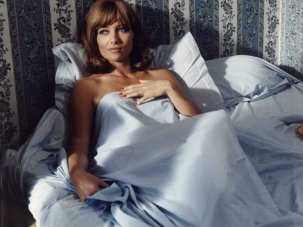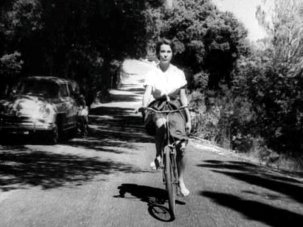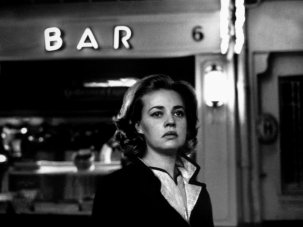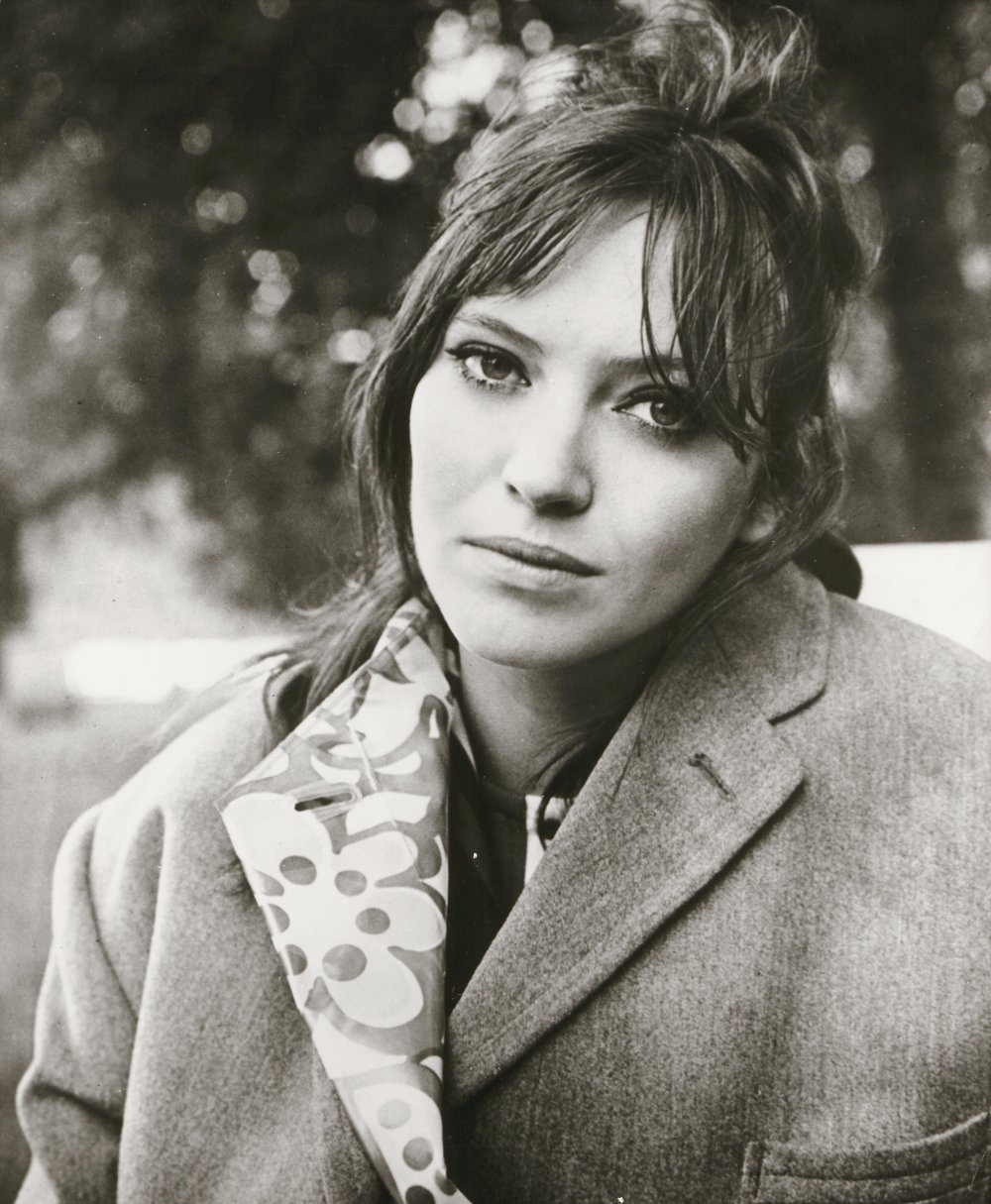
Anna Karina in Tony Richardson’s 1969 Laughter in the Dark
Credit: BFI National Archive
There is little quite so heavy for a performer to carry as the labels ‘muse’ and ‘icon’, and Anna Karina carried both throughout her career. The Danish-born actor was certainly an icon: there is no-one else whose screen image so completely incarnates the spirit of the French New Wave.
And few performers have been as literally a muse: the 1960s films in which she worked with Jean-Luc Godard, her husband at the time, were unmistakably his direct responses to her presence, her personality, her looks, the sometimes forbidding, sometimes playful distance that her reserve seemed to entail. As the names of her characters in those films might suggest – Veronica Dreyer, Natacha von Braun, Marianne Renoir – Karina often seemed to embody some idea about art and especially about cinema, but above all she represented herself, her youth, her creative complicity with Godard, and a euphoric discovery of a new form of cinema and a new way of inhabiting the screen, at once in and out of fictional roles.
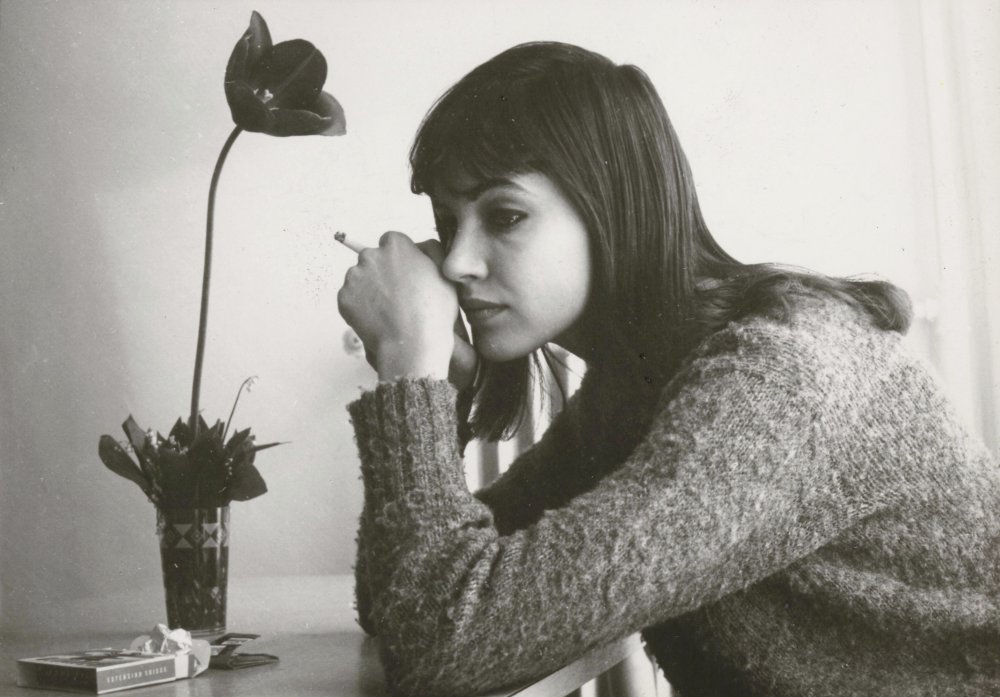
Le Petit Soldat (1963)
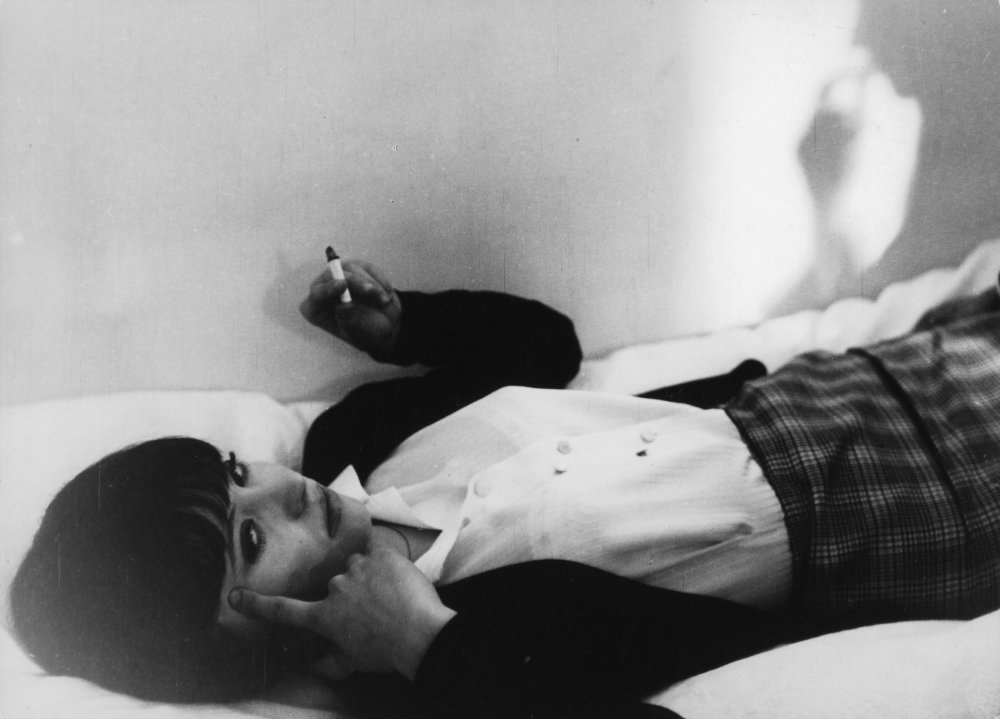
Vivre sa vie (1962)
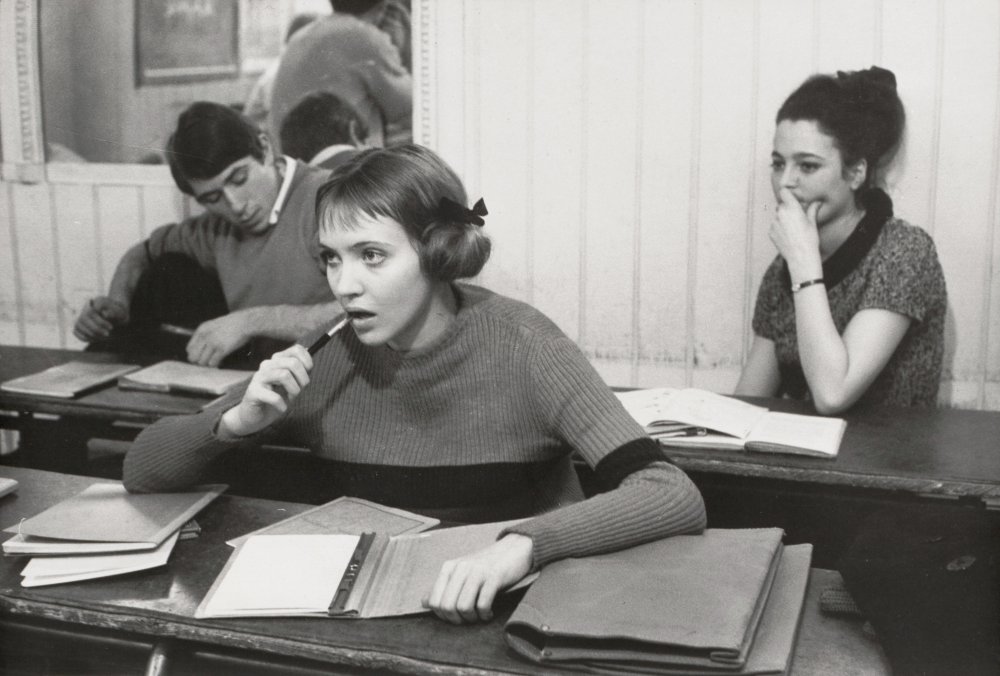
Bande à part (1964)
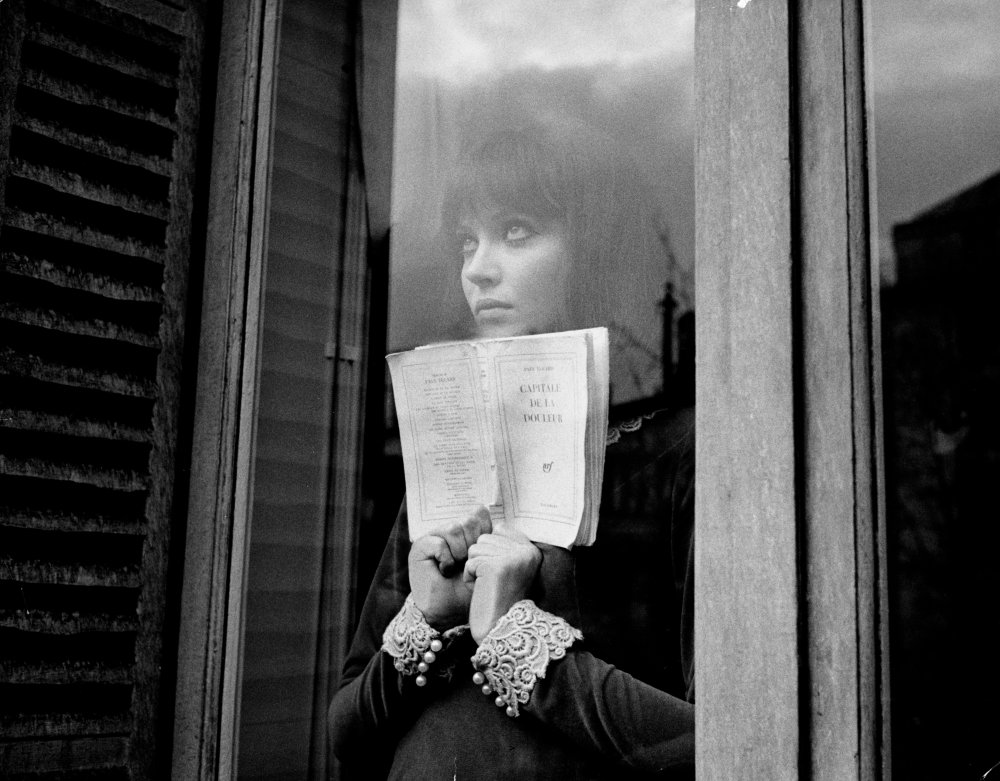
Alphaville (1965)
In those films, Karina could be other people, or other types of beings: the chilly inhabitant of the future in 1965’s science-fiction fantasia Alphaville, or a modern woman at once channeling both Emile Zola’s heroine Nana and silent screen goddess Louise Brooks in Vivre sa vie (1962). Her protean quality comes across most spectacularly in 1965’s Pierrot le Fou, a story of doomed runaway love that she and Godard made after a divorce that ended a reputedly stormy marriage (New Wave pioneer Jacques Rivette is said to have based his 1969 film L’Amour Fou partly on their arguments).
Throughout Pierrot, Karina’s Marianne Renoir slips in and out of various roles – among them, gamine babysitter, reckless outlaw and street performer doing a (now painful to watch) agitprop impression of a Vietnamese woman. Karina’s great moment in the film is the musical scene in which Jean-Paul Belmondo’s besotted Ferdinand croons to her about her thigh-line (“ta ligne de hanche”) and she unflappably corrects him (“ma ligne de chance”, ‘my line of fortune’) – the most insouciant and unanswerable brush-off in cinema.
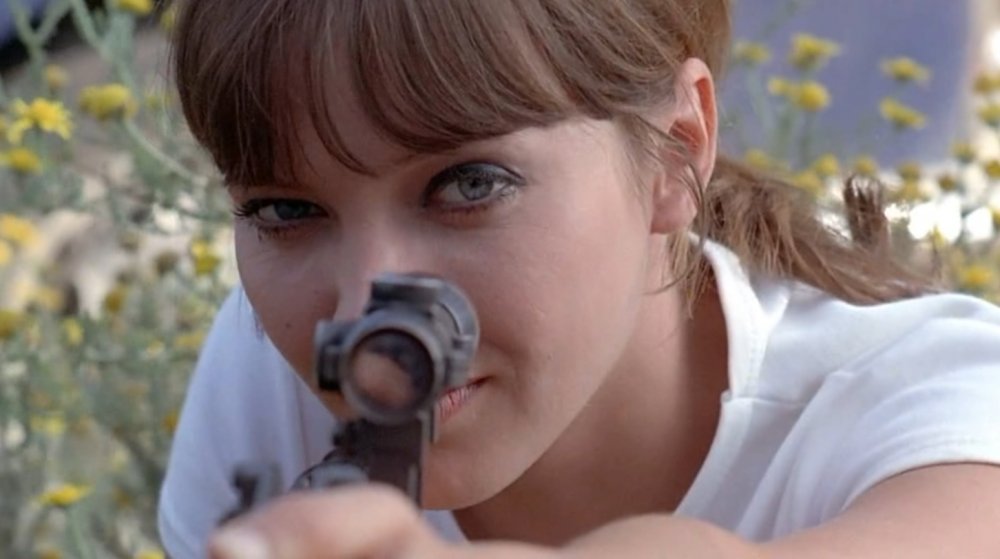
Pierrot le fou (1965)
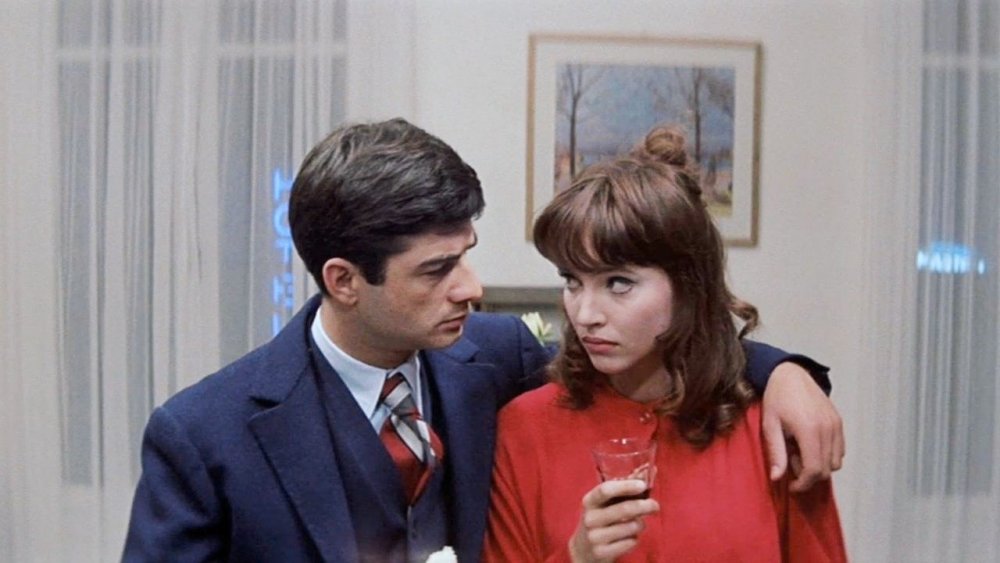
Une Femme est une femme (1961)
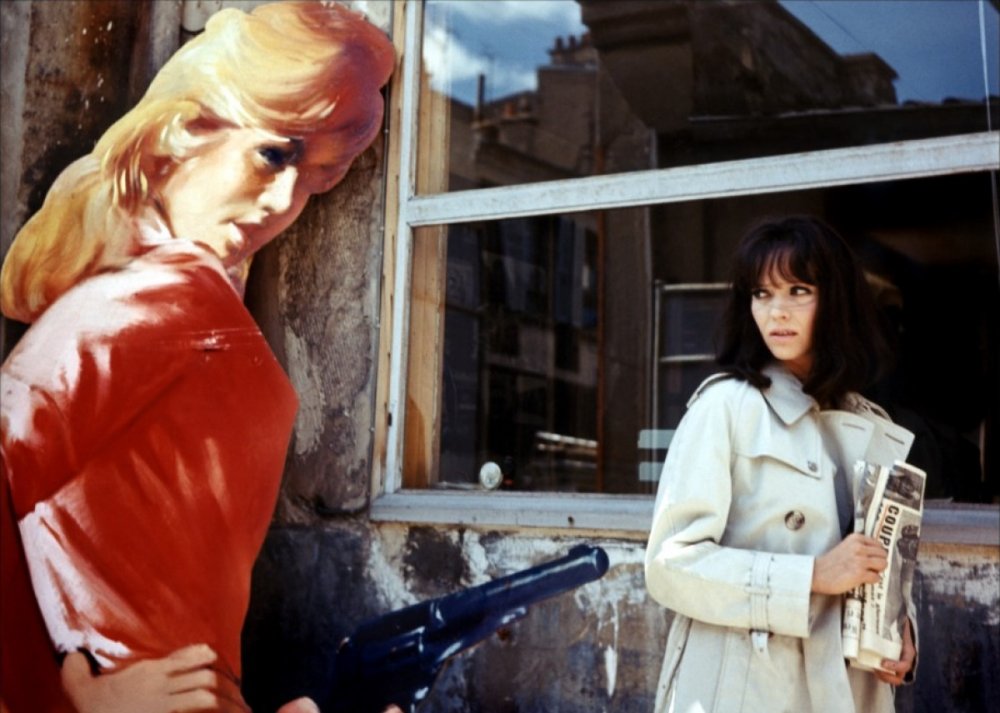
Made in U.S.A. (1967)
Karina was born Hanne Karin Bayer in Solbjerg, Denmark in 1940, started singing and modelling in her teens, then left for France aged 17. There she started a modelling career, famously discovered at then hyper-modish café Les Deux Magots in Paris’s Rue St-Germain. Godard spotted her on TV in a Palmolive soap commercial and offered her a role in his first feature À bout de souffle; she declined, reluctant to appear naked.
She starred in his second film Le Petit Soldat in 1960, although it wasn’t released until 1963, banned for its depiction of torture and commentary on the Algerian war. She and Godard appeared as lovers in a brief silent cinema spoof in Agnès Varda’s Cléo from 5 to 7 (1962). Karina starred in seven Godard features, including Une Femme est une femme (1961), for which she won the Best Actress award in Berlin; 1964’s Bande à part (part of an immortal hoofing trio in the famous ‘Madison’ dance scene); and the oblique, under-rated Made in U.S.A. (1966).
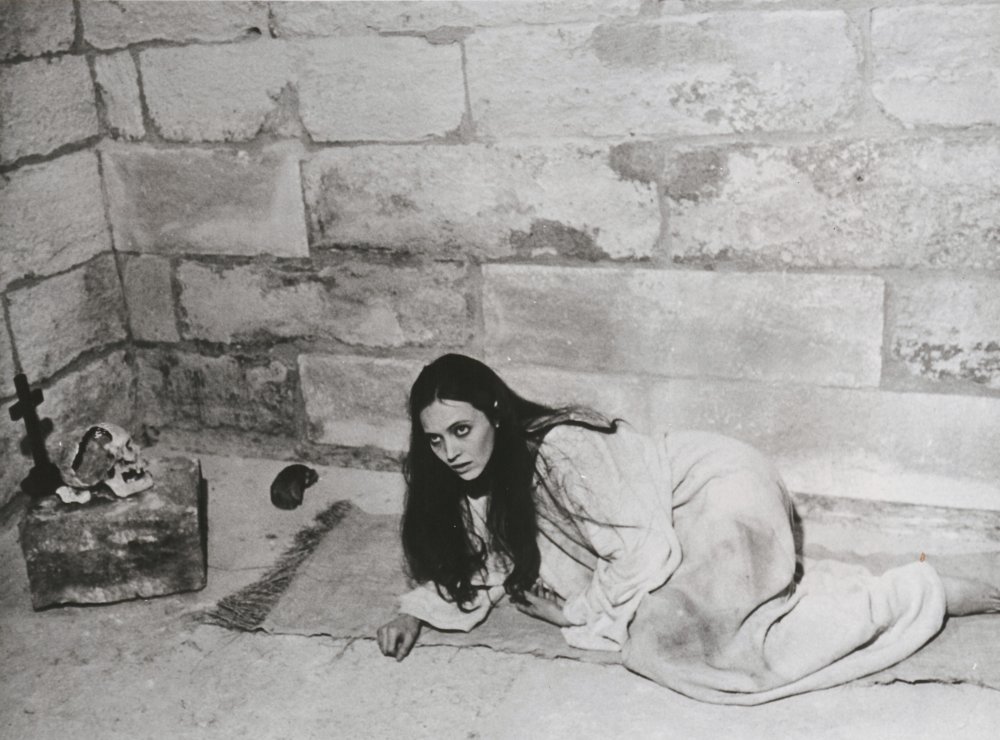
La Religieuse (1965)
She had a differently iconic role in another key film of the New Wave: she was the long-suffering heroine Suzanne Simonin in Jacques Rivette’s 1965 adaptation of Diderot’s 18th-century classic The Nun. The film became a cause célèbre of 1960s France, belatedly released in 1967 after being banned for offending Catholic sensibilities – this despite its impeccably restrained decorousness and artistic rigour. Karina’s radiant ingénue quality suggested both earthly tenacity and genuine spiritual depth, and magnificently offset the film’s somewhat oppressive severity. She had earlier played the role for Rivette onstage at the Théatre des Champs-Elysées in 1963 – one of a handful of theatre appearances that also included a version of Ingmar Bergman’s After the Rehearsal in Paris in 1993.
Karina’s career could have gone very differently, and been considerably more mainstream. Her films in the 60s included Michel Deville’s comedy Tonight or Never (1961); French-Italian-Spanish costume epic Scheherezade (1963), in the title role; and Roger Vadim’s 1964 La Ronde, as the housemaid Rose.
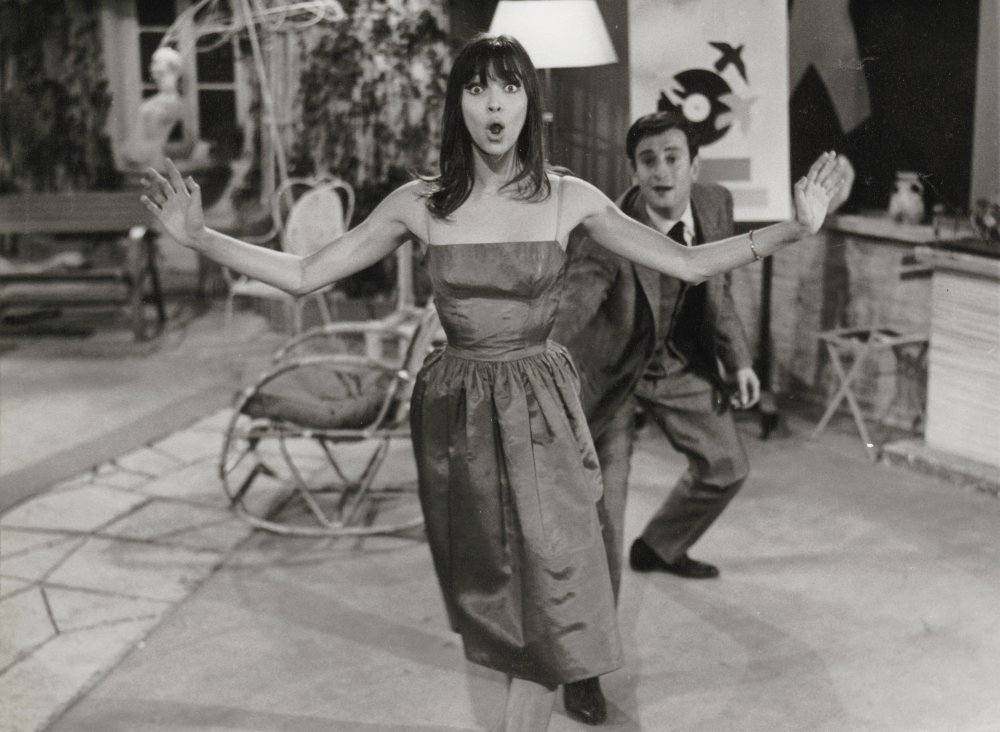
Tonight or Never (Ce Soir ou jamais, 1960)
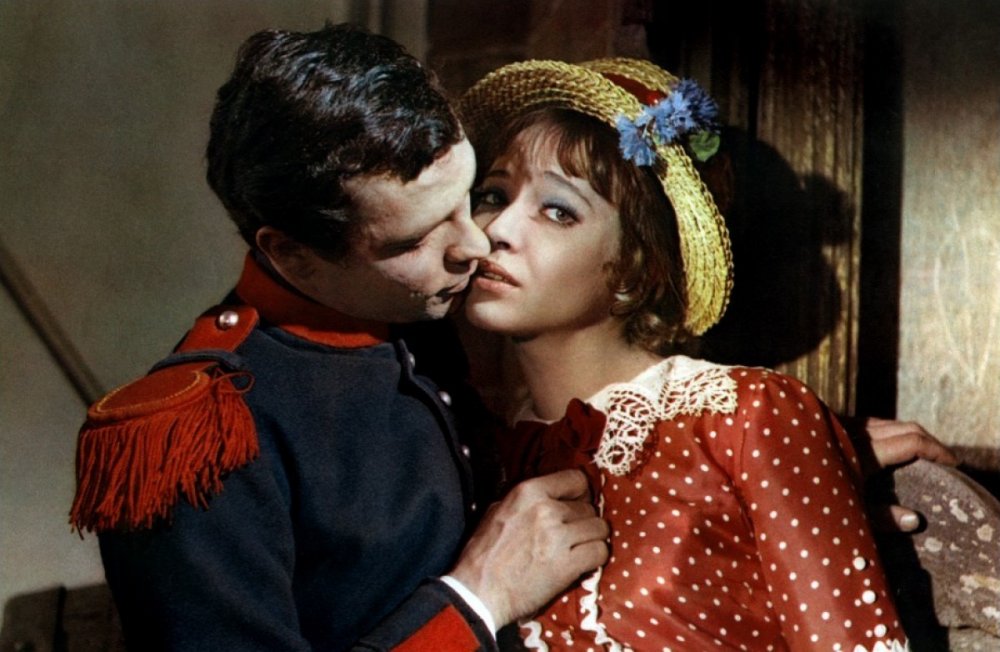
La Ronde (1964)
Anna (1967) was a film for TV written by and co-starring Serge Gainsbourg, very much celebrating Karina’s enigmatic allure; the film also launched her musical career, with her signing two Gainsbourg songs, Sous le Soleil Exactement and Roller Girl. She also appeared, believe it or not, along Bob Monkhouse and Hattie Jacques in 1962 British farce She’ll Have To Go (Karina is the ‘she’, an inconvenient French maid turned heiress to a family fortune).
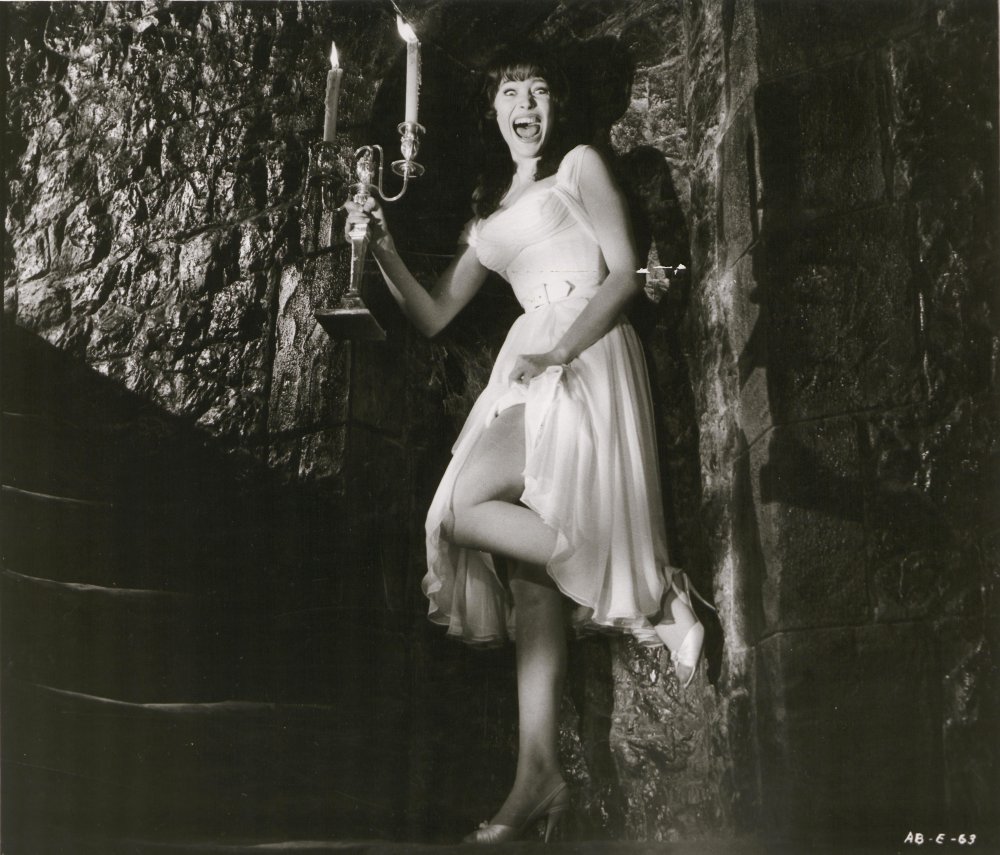
She’ll Have to Go (1961)
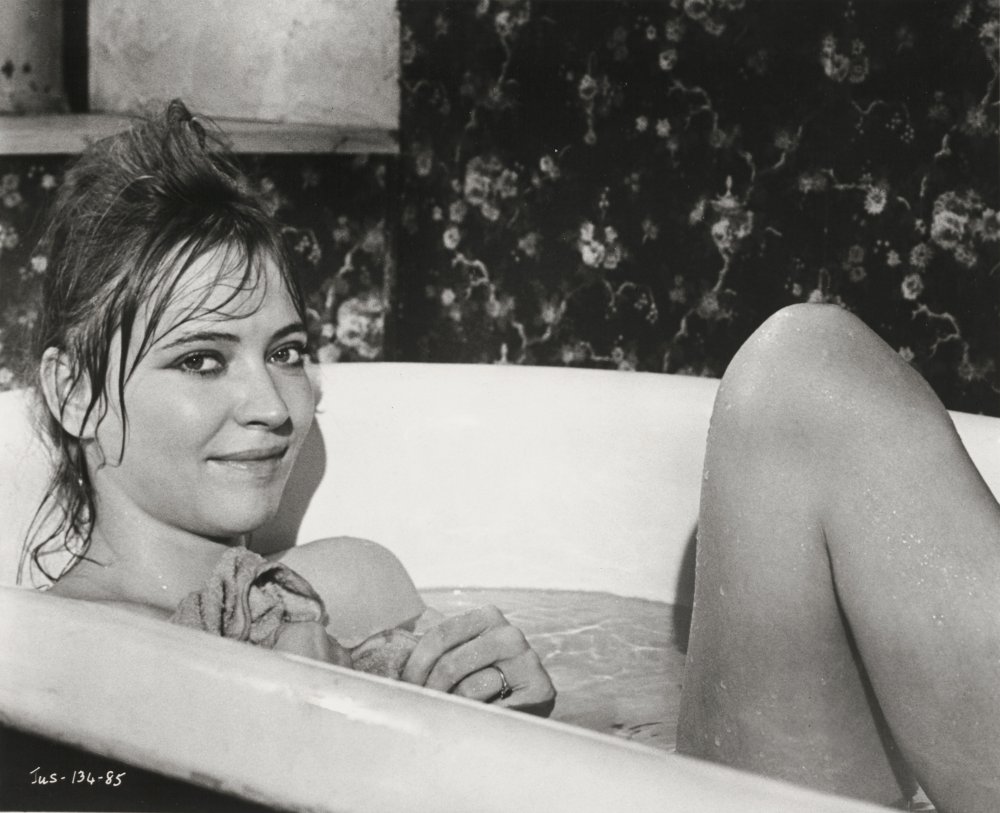
Justine (1969)
A US career never quite took off, despite a role in George Cukor’s all-star 1969 adaptation of Laurence Durrell’s Justine – and even a guest appearance in TV espionage series I Spy.
After parting company with Godard, Karina worked with other name directors and appeared in several high-profile films. She starred opposite Marcello Mastroianni in Luchino Visconti’s version of Camus’s The Stranger (1967), and was part of the glossy folly of John Fowles adaptation The Magus (1968); she was also cast against Nicol Williamson in Tony Richardson’s version of Vladimir Nabokov’s Laughter in the Dark.
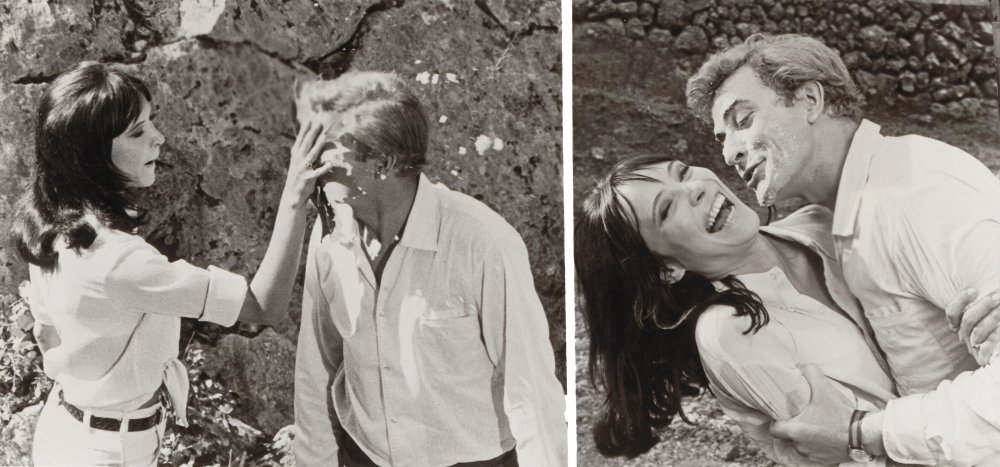
Karina delivers a custard pie to Michael Caine in The Magus (1968)
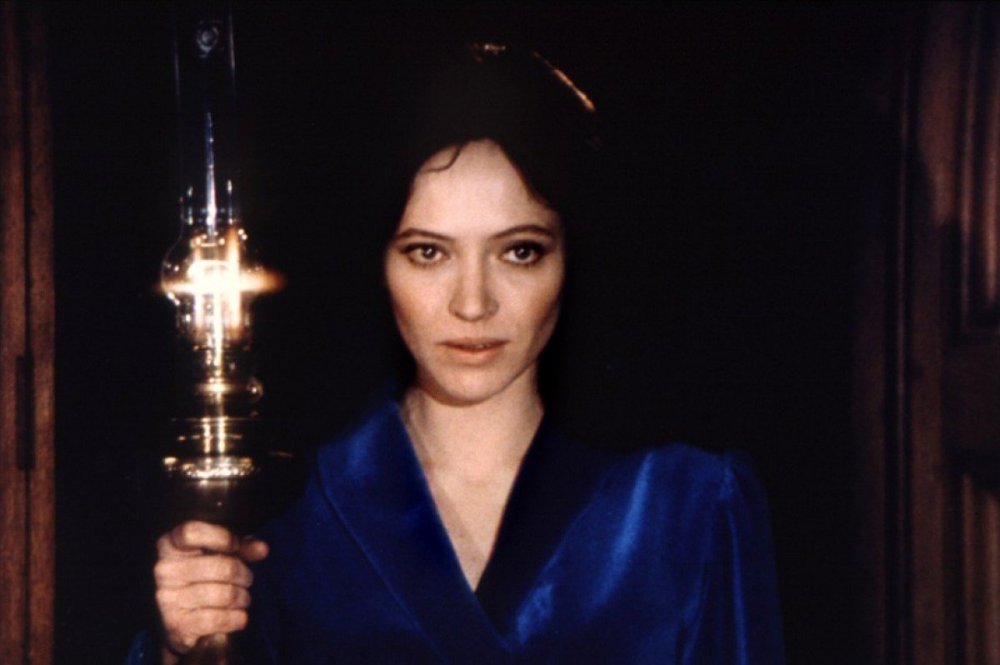
Rendezvous at Bray (1971)
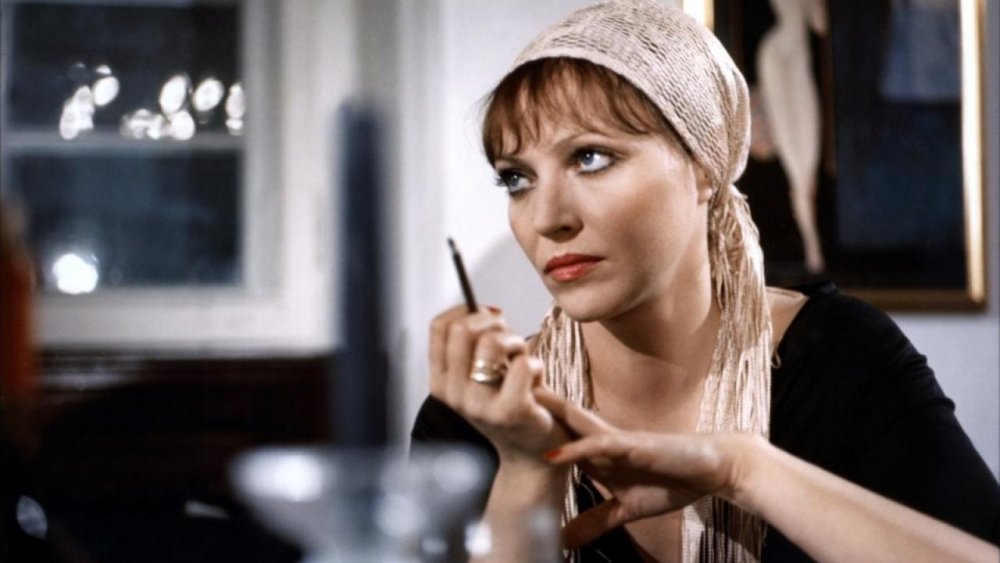
Chinese Roulette (1976)
Other films from this period include two that were highly regarded in their day, if somewhat forgotten now: Franco Brusati’s Bread and Chocolate (1974) and André Delvaux’s Rendezvous at Bray (1971), a period piece that gave her one of her most prominent lead roles. In 1976, she starred in an early Benoît Jacquot film, The Musician Killer (L’Assassin Musicien) and in Rainer Werner Fassbinder’s chilly psychodrama Chinese Roulette.
Also in the 70s, Karina wrote and starred in the first of two films that she directed herself, Vivre Ensemble (1973), shot in Paris and New York; she played a woman whose counter-culture lifestyle fascinates a staid teacher.
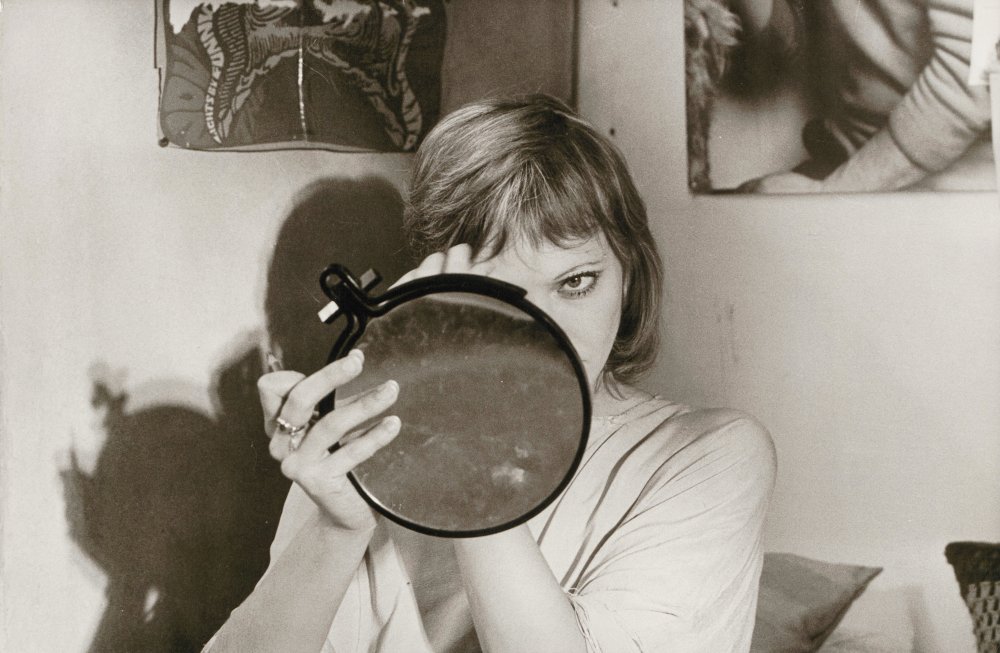
Vivre ensemble (1973)
Karina continued acting throughout the 80s – notably in Raul Ruiz’s dizzily eccentric reimagining of Treasure Island (1985) and in Last Song (1986) by Dennis Berry, an American director who was Karina’s fourth husband (and who had previously been married to an earlier Godard star, Jean Seberg: French film history can seem terribly incestuous sometimes).
She was less active on screen after that. She only made three films in the 90s, but they included a reunion with Rivette, the too little seen thriller-musical hybrid Haut bas fragile (1995), in which she had a striking support role as a cabaret singer (Rivette had planned to make her the lead of a musical in the 70s). She sang again in Jonathan Demme’s Paris-set (and nouvelle vague-besotted) thriller The Truth About Charlie, alongside cameos by Agnès Varda, Charles Aznavour and French musician-actor-humourist Philippe Katerine, with whom she recorded an album, Une Histoire d’Amour, in 1999.
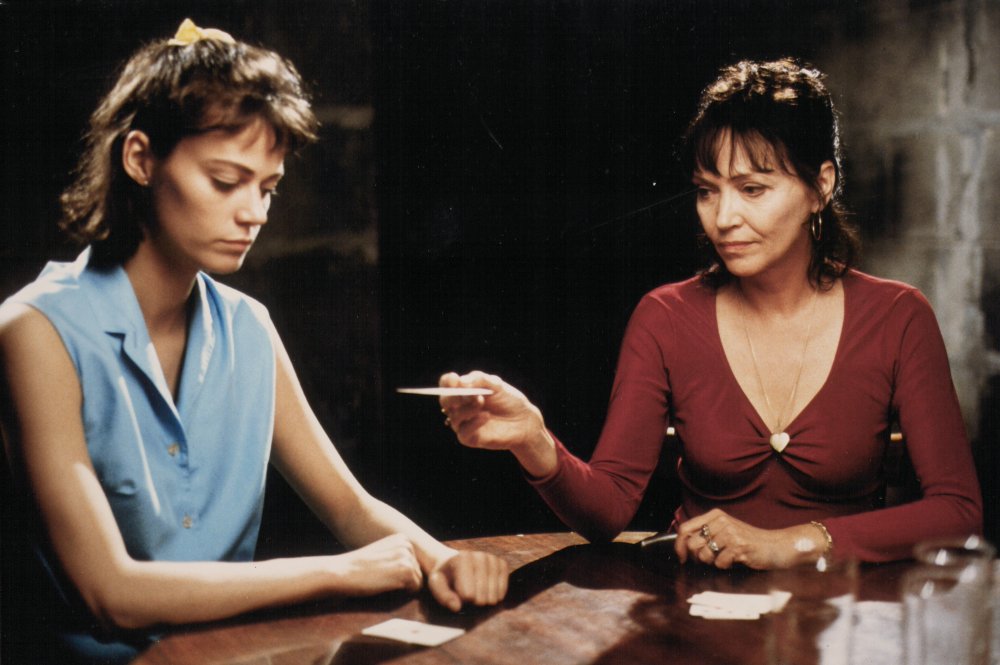
Haut bas fragile (Up, Down, Fragile, 1995)
Few of Karina’s films made nearly the same impact as her Godard collaborations, prestigious though some of them were. But she increasingly had other things to do beyond the screen: apart from the singing, four novels between 1973 and 1998, and another film as director, writer and star, the Canadian-shot Victoria (2008).
-
The 100 Greatest Films of All Time 2012
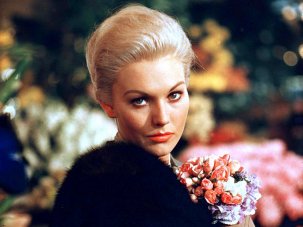
In our biggest ever film critics’ poll, the list of best movies ever made has a new top film, ending the 50-year reign of Citizen Kane.
Wednesday 1 August 2012
-
The Digital Edition and Archive quick link
Log in here to your digital edition and archive subscription, take a look at the packages on offer and buy a subscription.




